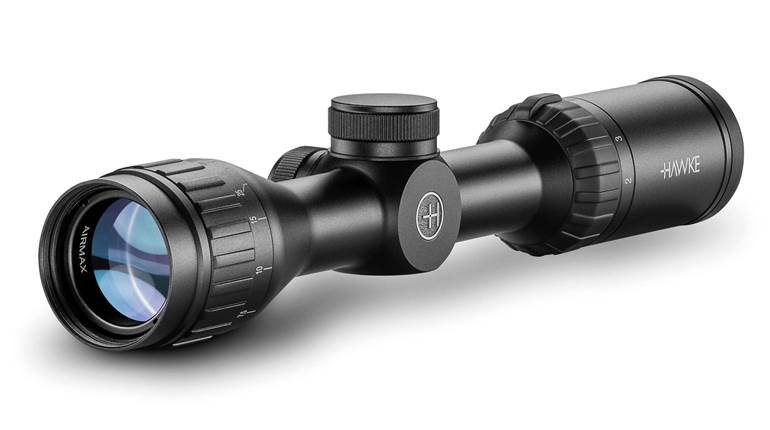
When Carl Zeiss introduced its Conquest line of riflescopes in 2001, it was the first time that the company acknowledged American tastes and hunting requirements might differ from those of central Europeans. Among the features different from other Zeiss scopes were lighter weight, plus longer and constant eye relief.
Just as important was a price competitive with popular American-style scopes, made possible by most parts being made in the Czech Republic, which offers less expensive labor costs than Germany. Inevitably, the price started creeping upward, partly because wages rose enough that most Conquest manufacturing shifted to Germany.
Zeiss finally gave in to the world-wide trend of having optics manufactured in Asia with the new Terra 3X scopes, which are intended to sell for less than the Conquest line. The lower-magnification Terra scopes sold so well that Zeiss decided to drop what were essentially the same Conquest scopes. The scope tested here is the Terra 3-9X 42 mm with Z-Plex, or a standard plex-type, reticle.
The test rifle was a Heym SR-21 bolt action in .300 Win. Mag., chosen because it recoils hard enough to test the internals of hunting scopes, and because it’s very accurate.
After mounting the Terra in Talley steel rings, a couple of shots at 25 yards got the rifle on paper at 100 yards, and the scope was then adjusted to put the bullets right at the point of aim. The clicks could be easily felt and heard. After allowing the barrel to cool, three more shots resulted in a group of 0.65 inches typical for the rifle.
After that the windage adjustment was cranked 3 inches (12 clicks) to the left, and one shot fired. After that 24 clicks were made between shots, alternating between windage and elevation, resulting in single shots at each corner of a 6-inch square. After more than two dozen shots, four groups appeared at the corners of the target, measuring 1.13 inches, 0.41 inches, 0.87 inches and 1.38 inches, an average of 0.95 inches. Distances between the centers of the groups ranged from 5.75 inches to 6.5 inches, with an average of 6.06". When divided by 24 the result is 0.2525 inches, for all practical purposes equal to the advertised 0.25-inch clicks.
The optics test took place after dark, using a chart of 10 alternating black-and-white lines, starting with a 1" line at the top and gradually thinning to a 1/16" line at the bottom, illuminated with a 100-watt incandescent light bulb from 25 yards.
Scopes are rated by the smallest line visible when set to 6X. With hundreds of scopes tested over several years, so far none has tested better than an 8, the 3/16-inch line, and all of those cost more than $1,000. Most modern multi-coated scopes under $500 test around 6. After adjusting the focus, the Terra rated a solid 7, the same as all the Conquests tested over the years.
There wasn’t any of the “looking through a tunnel” effect seen on some scopes, and the eye relief (tested with the flashlight method) measured 3.7 inches at 3X, slightly exceeding the nominal specifications, but only 2.8 inches at 6X and 2.5 at 9X. This was the biggest difference between the Terra and the Conquests, since all the 3-9X Conquests we have tested exhibit eye relief of at least 3.5 inches anywhere in the magnification range.
The specifications indicate that the functional temperature is minus 13 to 122 degrees F. After placed in a chest freezer set to minus 10 overnight, and with the turret caps removed, the Terra was placed in 110 degrees F. water for two minutes. No bubbles appeared, and after the dunking there was only slight interior fogging, which dissipated within less than a minute. This is normal even in well-sealed scopes, since it’s impossible to keep all moisture out after they leave the factory.
With its new Terra riflescopes, Zeiss has made available to shooters optics that exhibit the performance the company is known for, but at a price most can afford.
Importer: Carl Zeiss Sports Optics, 711 Moorefield Park Drive, Building E., N. Chesterfield, Va., 23236; (800) 441-3005
Magnification: 3-9X 42 mm
Finish: matte-black
Eye relief: 90 mm (3.54 inches)
Click value: 1/4 inches at 100 yards
Reticle: Z-Plex (tested), RZ6 and RZ8 ballistic
Length: 12.4 inches
Weight: 14.8 ounces
Accessories: owner’s manual
Suggested Retail Price: $444





































